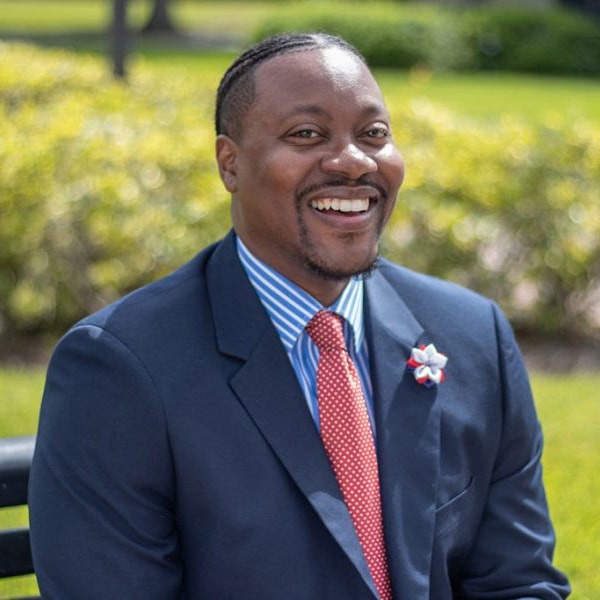Full-time faculty members could have multiple reasons for wanting to become tenure. Many of these reasons may include job security and stability, increase in pay, ability to lean into academic freedom, and in some cases, more autonomy. Regardless of the reasons for wanting tenure, it is a pretty lovely accomplishment to achieve if you desire it. While not all faculty will aspire for a tenure position, those who do may find that the process feels secretive or exclusive. This article will explore some of the things faculty should know about applying for a tenure-track position. This article will specifically provide advice for faculty in full-time positions that seek to convert to tenure-track positions. While each institution’s tenure-track process is different, I will give a few basics that all faculty applying should know. As a professor who recently went through this process, here is what I wished I knew in advance.
Key stages of preparation include:
- Sending your intent to apply
- Preparing your portfolio for review
- Preparing for your interview
- Preparing for your classroom teaching observations
It is essential to successfully complete all four steps to have a fair shot at obtaining a tenure-track position. I will provide an overview of each step and provide you with information on how to plan for each stage in the tenure-track appointment process.
Step 1: Provide Your Intent to Apply
Your institution should notify you when you are eligible to apply for a tenure-track position. However, it would be best if you also review your institution’s faculty manual to be sure you know when you will be eligible as well. If you aspire to obtain a tenure position, you should create a list of requirements and keep track of when you meet or achieve each eligibility condition. This will help you to be sure and feel confident when it is time for you to apply for a tenure position. Additionally, the letter of intent to apply will vary based on institutions. Institutions may ask for a formal letter, simple email, or an application to satisfy your intention to apply requirements. Whatever the format, you will want to complete and submit your intent to apply, as this is the document that will set your application in motion. Your intent to apply shows that you are serious about the position. It notifies all individuals (Vice President of Academic Affairs, Dean, Assistant Dean, Department Chair, Coordinator, etc.) who may be able to support, mentor, coach, and guide you through the process. Your letter of intent should include your name, current position, position you are applying for, and academic year. You should also check to see if you will need to have any additional documents from your institution that demonstrate your eligibility to apply. Below you will find a brief example of what your letter of intent could include.
Dear, (Insert name of person you are submitting your letter to).
With great pleasure, I, Dr. Antione D. Tomlin, Assistant Professor of Academic Literacies and English, submit my intent to apply for the Tenure-Track position for the 2020-2021 academic year. I am excited about the next steps and look forward to confirmation of my intent to apply. Thank you.
Best,
Antione D. Tomlin, PhD
Step 2: Preparing Your Portfolio
Now that you have sent your intent to apply for the tenure-track position, you will need to gather your teaching materials. Your tenure-track committee will want to see a portfolio you created to demonstrate your teaching effectiveness, scholarship, professional growth and development, and dedication to your field and institution. Keep in mind, even though you may know your committee, they will also evaluate you based on what you have submitted, not what they know about you. So, include everything you think will make a reasonable justification as to why you deserve a tenure position. Leave nothing to chance; you may only get one shot to apply for tenure. As you create your tenure portfolio, below are a few things to consider including. Some institutions may use a faculty information system to aid in the data collection and submission of evaluation materials; check with your institution’s tenure-track committee to determine how you submit materials.
1. Samples of Course Materials
Your course materials could include syllabi, tests, handouts, lab assignments, discussion posts, etc. These materials will give the committee an idea of the level of rigor, organization, innovation, and detail you use to facilitate your course. Additionally, these materials will provide the committee a glance at your expectations of students as faculty. Therefore, it is vital to review your materials for structure, accuracy, and clarity. Rule of thumb, if your tenure-track committee cannot understand your materials, your students probably cannot either, and that’s not a discovery that would work in your favor when applying for tenure.
2. Summary of Faculty Records
At many institutions, faculty have some record or report they need to complete that demonstrates their work through the academic year. This record or report encapsulates significant faculty responsibilities, professional activities, accomplishments, and contributions throughout the academic year. Some of the areas highlighted include a. Professional Responsibilities, b. Teaching Effectiveness, c. Professional Growth, d. Department Services, and e. College/Community Service. For your tenure application, you will want to combine all of your faculty records from each year at your institution and create a summary. This will provide the tenure-track committee with a snapshot of your major responsibilities, accomplishments, and contributions during your time at your institution. This is where you really get to sell yourself, so do not sell yourself short!
3. Summary of Student Evaluation Forms
Including Student Evaluation or Opinion Forms may be optional depending on your institution. If they are to be included, you will want to include a mixture of good and constructive feedback. You will want to provide narrative summaries of your feedback, possibly making the feedback more digestible for your committee when they review. Include good feedback that showcases your rapport with students and effectiveness as a faculty member. You will also want to have feedback that provides constructive suggestions. This will let the committee know that you are serious about continuous improvement. Be sure to mention how you addressed and made changes to develop as a faculty member based on the feedback received.
4. Other Relevant Information
Lastly, you will want to include any other documentation that you feel will help your portfolio shine. Additional relevant information or materials could consist of personal statements, letters documenting service, research, presentations, publications, etc. This is the section in your portfolio where you get to toot your own horn a bit. Only you know everything you have done and accomplished, so do not hold back; include as much as you can.
The last tip for preparing your portfolio: treat it as an application. Remember, you will not be able to explain any of the materials in your portfolio, so it needs to be very detailed, organized, and well-written. Your portfolio should tell the committee all the things you would if you were face-to-face while they reviewed.
Step 3: Preparing for the Teaching Observation
Most likely, your tenure-track committee will need to visit your courses to perform an observation. Your committee will be coming to your classes to observe a few things. Two critical criteria might include content and facilitation. Below I will share some checklists that the committee may use during their evaluations.
Content
- Demonstrated knowledge of subject matter
- Presented materials in an organized manner and made productive use of class time
- Presented materials at a level appropriate to its importance and difficulty
- Explanations were clear and sufficient
Facilitation
- Method of presentation seemed effective for course materials
- Effectively encouraged and maintained student interests and involvement
- Effectively addressed student responses
- Relationship with students seemed conducive to learning
- Greatest strengths
These are some of the criteria that observers may use when visiting your course. Additionally, observers may use the above criteria as a tool to assist with the observation, and they will most likely create narratives about their experience in class. That is to say, they will be drafting more open-ended responses to the above criteria. Lastly, remember to breathe and have fun! Engagement and mastery of the art of teaching are what your committee will be looking to observe.
Step 4: Preparing for the Interview with the Committee
For some, this step in the process can be the most daunting or terrifying, and it does not have to be. With preparation and support, you can approach your interview from a more fun and confident perspective. The question of “Why do you want tenure?” may come up, so yes, practice your response to this question. However, that is not the only question that would help the committee gain more insight into if you would be a great candidate to recommend tenure. Other questions you should be prepared to answer include:
- What have you done to support Diversity, Equity, and Inclusion (DEI) and the institution’s commitment to DEI?
- What leadership roles have you taken on and how have they shaped your leadership philosophy?
- What is your understanding and idea of student success and assessment?
- What have you done to improve your teaching?
- What is your idea of what it means to be tenure-faculty here?
- If granted tenure, what are you looking forward to doing within your first year?
- Why have you decided to apply for tenure here?
- What is one thing that you learned here that will help you to be an effective tenured faculty member?
- How does tenure here fit into your long-term goals?
During the interview, remember to focus on you, your accomplishments, and your hopes for the future if awarded tenure. This is not the time or space to express all the negative things you have noticed at your institution or even with your tenure-track application process.
Lastly, note that your tenure-track committee has just one recommendation in the process. While they have a significant role to play, they do not have the only say in if a candidate is awarded a tenure position or not. The committee will send their recommendations to the Dean. In some cases, the Department Chair or Assistant Dean will also review portfolios and send their recommendations to the Dean. The Dean will consider all recommendations before sending their final recommendations to the Vice President of Academic Affairs. While this process can feel isolated and not transparent at some institutions, I hope that this provides a little more guidance for individuals preparing to apply for tenure-track positions.
Are you preparing to apply for a tenure-track position? Need help? Have additional advice to provide? Feel free to send your responses via Twitter (@TomlinAntione) so that we can continue this conversation!
Author’s Bio:
Dr. Antione D. Tomlin earned his PhD in Language, Literacy, and Culture from the University of Maryland, Baltimore County and is an assistant professor of Academic Literacies and English at Anne Arundel Community College.
Any opinions, findings, conclusions, or recommendations expressed in this material are those of the authors and do not necessarily reflect the view of Interfolio.










